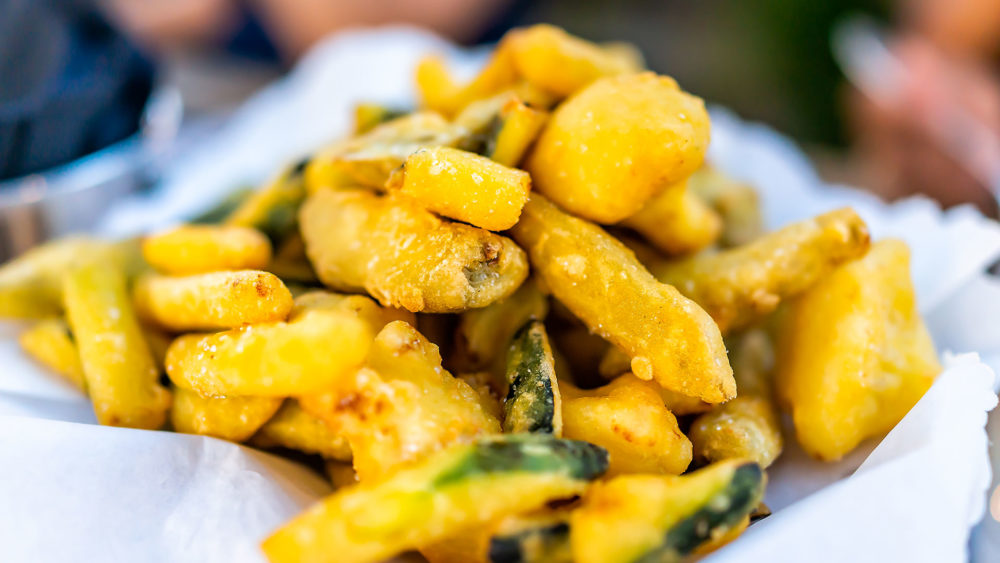
Notable Millennial Food Trends: What Do They Like to Eat?
If you’ve noticed a change in food trends over the last five to 10 years,
As 2022 kicks off and the industry continues to adjust to changing market conditions, the food trends to watch will influence all parts of the industry, from restaurants to CPG. For manufacturers, tuning into these trends will be critical to innovation—according to Datassential, at least 70% of consumers in the U.S. indicate that their food preferences are driven primarily by what they encounter on restaurant menus. 2020 and 2021 saw a revival for always-popular comfort foods, as consumers sought out dishes that made them feel nostalgic or calmed their nerves—or foods in which they simply loved to indulge. And while some of those trends are expected to continue into 2022, there are menu trends that food manufacturers should tune into for maximum success.
Here’s five 2022 food trends, what restaurants are doing with them and how they can be adapted to retail and consumer packaged goods.

As more and more consumers explore meatless diets—or even just occasionally meatless meals—operators are looking to things such as dairy to offer satisfying, craveable options for diners. For instance, vegetarian pizzas are being offered with dairy-based sauces, plant-based burgers are being topped with delicious sliced or crumbled cheeses and plant-based pasta dishes often feature dairy-based sauces as well as dairy-based toppings.
Consider interesting ways to use cheeses in products marketed toward consumers who want meatless or flexitarian options. For instance, use alfredo sauce to craft a unique vegetarian frozen pizza, or market prepared zoodles topped with fresh mozzarella or parmesan cheese. Plant-based burgers can be customized, too, with customers’ choice of cheeses at grocerants, and retailers can position sliced, packaged cheeses next to plant-based burgers in the freezer or refrigerator cases to boost interest in specialty cheeses on grilled meals.

Egg sandwiches have been a breakfast and brunch mainstay for years, of course, but components of this classic have moved into other dayparts, too. For instance, many chains have introduced burgers topped with a fried egg—upping the indulgence factor of a fan favorite. By increasing the level of indulgence and comfort of a sandwich by adding an egg, or by updating an egg sandwich with exciting ingredients or condiments, operators and retailers can keep consumers hooked and interested in trying something new. For example, breakfast sandwiches can get an update with premium cheeses, global condiments and upgraded toppings, such as cheeses or guacamole. With 92% of convenience stores and 72% of midscale restaurants offering breakfast sandwiches, it’ll be important in 2022 to offer upgraded choices to keep up with competition while appealing to customers.
Consider upgrading frozen breakfast sandwich offerings by updating the carriers; cheesy bread, buttermilk waffles and maple-butter biscuits are all great options. As for fillings and toppings, add flavored cream cheeses, spicy cheeses and even cheese sauces to add a twist to the standard bacon/sausage, egg and cheese combo. Products from DFA Ingredient Solutions can also be used to quickly and easily prepare flavored mayos, aiolis and other condiments.

Comfort foods, such as potatoes au gratin, have been surging in popularity amid the pandemic, and that trend is expected to stick around. For diners and shoppers looking for something that pairs comfort food with seasonal flavors, consider giving lighter fresh veggies the au gratin treatment. Deep-fried global foods can also feature springtime veggies like artichokes, asparagus, peas, scallions and zucchini for consumers who are looking for something interesting, comforting and exciting year around. Vegetable-based potstickers, for instance, can be featured both on restaurant menus as well as in the grocery store’s frozen section—an ideal solution for shoppers who want a comfort food that isn’t a “classic” option such as mac and cheese.
Consider offering side dish kits for easy gratin prep—include ingredients such as cheeses or cheese sauces, cheese powders that consumers can reconstitute easily at home with milk and butter (or enriched powders that can be reconstituted with water), as well as tasty additions such as bacon bits or buttery toasted breadcrumbs. For global flavors, incorporate dairy ingredients from DFA Ingredient Solutions to add the flavors and textures needed to create authentic, delicious snacks and meals that shoppers can enjoy at home.

Regional global cuisines have long been influencing menus, but as retailers know, those trends first play out in foodservice before making their way to the shelves. The time for these regional choices to be available for mass consumption is now: Mexican, Chinese and Italian cuisines remain popular and regional cuisines from those countries are expected to continue to grow on menus. According to Technomic’s 2022 Trend Prediction Grab & Go report, cheeses such as cotija and queso fresco are gaining popularity, indicating an increase in interest in authenticity when dining on global cuisines. Food manufacturers should consider expanding their globally inspired selections to include more cheeses and flavors from around the globe, and restaurants should work to add global cheeses, spicy flavors and ingredients such as beans, peppers and more to existing and new dishes. Technomic’s 2021 Flavor Consumer Trend Report confirms this—62% of consumers say they like trying new flavors of food from time to time, and an additional 15% say they actively seek out new flavors to try on a regular basis.
Manufacturers should research different spice blends and sauces when creating regional offerings for retail and CPG endeavors. Utilizing different products from DFA Ingredient Solutions, such as dairy seasonings, dairy powders, concentrated dairy pastes and more, food makers can easily offer these new dishes to consumers. For instance, use cheese-flavored concentrated pastes to create unique pasta dishes for the freezer case. Other ingredients can be used to make ready-to-eat dips from around the world.

Desserts are yet another menu item that isn’t going anywhere anytime soon, of course, but in 2022, elevated options are expected to grow in popularity. Macarons, for instance, have shown 89% growth year-over-year on menus, and specialty donuts are up 88% over the same time period, according to Technomic’s Q2 2021 Grab-and-Go Dessert Menu Trends report. Interestingly, global desserts, such as cannoli, may also be on the rise, thanks to younger consumers—that same report noted that 54% of millennials enjoy traditional dishes that have a global flavor twist. Here’s how elevated desserts are playing out in restaurants.
Refrigerated and frozen eclairs are a staple of the chilled case, but suppliers can consider changing up the fillings to introduce new flavors to consumers. For instance, a tropical filling can be great for summertime, and mint or pumpkin spice are perfect for chillier temperatures. Macarons, likewise, are an ideal offering and can be packaged for refrigerated purchase, or made in-house; use dairy powders, sweetened condensed milk and other options from DFA Ingredient Solutions to make fillings for macarons a breeze. Donuts also get a boost from dairy products such as milk powder—a great alternative to fresh milk in yeasted dough recipes— and dairy ingredients can also be used for glazes, icings and fillings.
As food manufacturers and foodservice operators know, keeping things exciting while offering customer favorites is the key to attracting the most business. By incorporating trending foods into the lineup both on the shelves and on the menu, foodservice operators, retailers and food manufacturers alike set themselves up for 2022 success.

To learn more about dairy ingredients that can boost business and make it easy to stay ahead of trends, visit dfaingredients.com

If you’ve noticed a change in food trends over the last five to 10 years,

Who’s in Generation Z? Every generation has its own take on food, and Generation Z